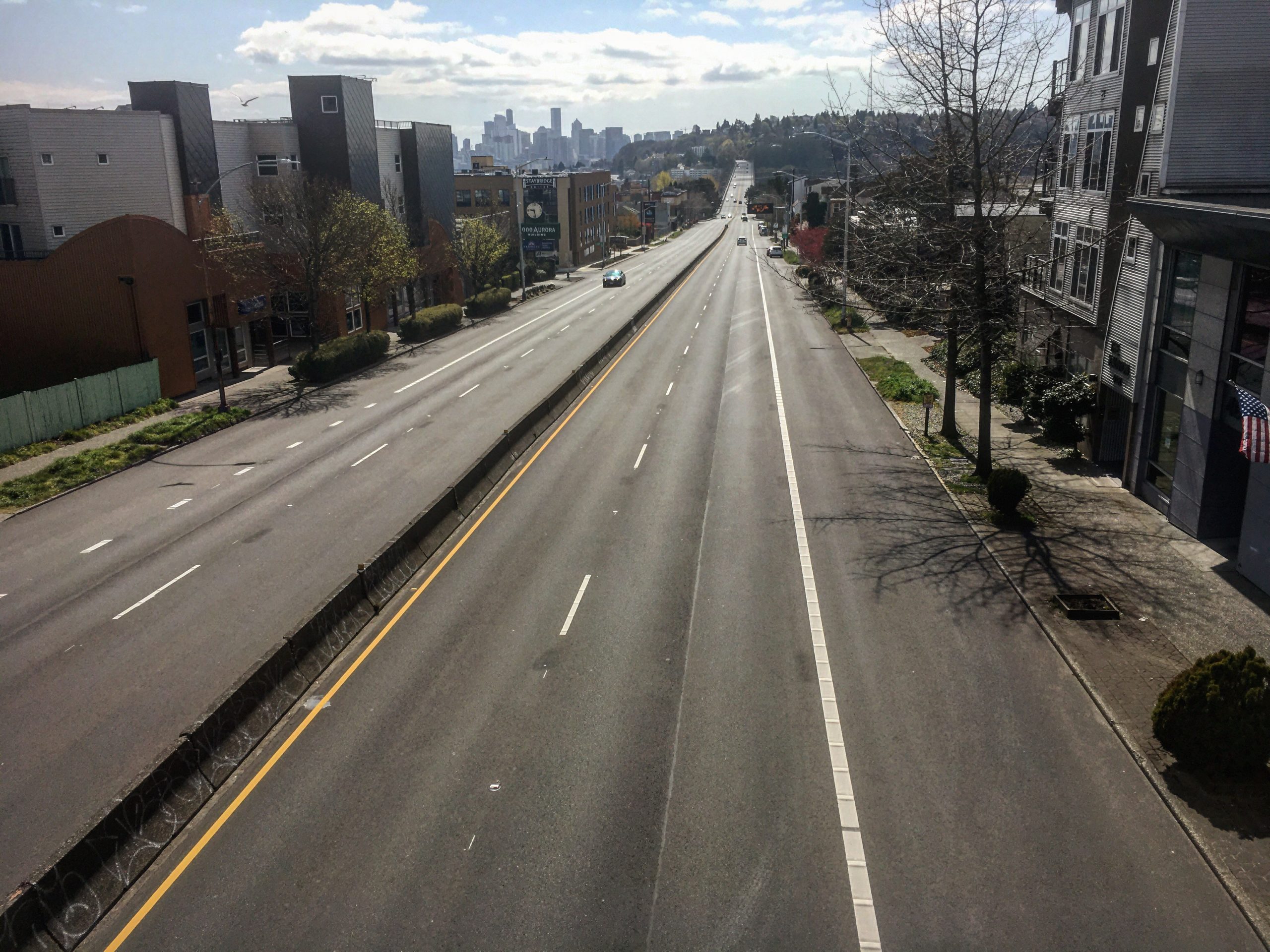UPDATE 4/17/20: Since publishing this I’ve been trying to keep up with the ongoing firehose of related stories and happenings in a big bad Twitter thread (click “show this thread” once it opens on Twitter):
What did I get right? What did I get wrong? What did I miss?
Threading through the 15 things…https://t.co/0ht4s9x14H
— Dan Bertolet (@danbertolet) April 9, 2020
Here’s a cheat sheet to navigate the thread:
1. The absence of cars makes the heart beat longer.
2. Working from home gets turbocharged.
3. Millions of renters are now hanging by an even tinier thread.
4. You can’t shelter in place if you don’t have shelter.
5. A downturn has upsides for creating subsidized housing.
6. Flexible housing is a crisis shock absorber.
7. We’ve got to spend less money building each new home.
8. Airbnb units can switch back—and that’s a good thing.
9. How deep into the matrix will we go?
10. “Hey cars, can we please have some land back?”
11. Walking is the best, but what’s there to walk to?
12. Bikes were made for cities and cities were made for bikes.
13. Getting kicked while they’re down: transit and shared micromobility.
14. A big chance to boost climate action or another excuse to punt?
15. Cities will be okay.
…
The unfolding human tragedy of the coronavirus makes all else feel trivial. Yet the fallout will change how we think about cities, and perhaps, eventually, how we do cities. The unprecedented, near-total shutdown of the places in which we normally live our lives exposes flaws as much as it reveals opportunities. But it’s early, things are moving fast, and nobody knows what will happen. Here’s a grab bag of observations.
1. Absence of cars makes the heart beat longer.
The drop in driving has cut air pollution so much that people can see it with their own eyes. A Stanford University researcher estimated that reduced pollutants in China may save 77,000 lives, dwarfing the reported total number of COVID-19 deaths there (3,337 as of 4/7/2020).
Meanwhile, traffic analysis firm INRIX reports that “distances traveled on Seattle roads” are down 45 percent, and UC Davis estimates that collisions dropped by half in California. In many places throughout the US, personal travel has fallen by much more than one half, and a proportionally dramatic decline of car crashes may result. Urban areas are much quieter now too, potentially curtailing the underrecognized health problems caused by excessive noise. US deaths from roadway collisions and pollution—every year—together add up to nearly as much as the White House’s current low-end estimate, assuming social distancing, of 100,000 deaths from COVID-19.
This isn’t anyone’s vision for the way to reduce auto dependence; what we need to do is build cities where driving and prosperity can coexist. Still, this is a powerful taste of car-lite cities. Will it shift how city-dwellers think about safety and pollution?
2. Working from home gets turbocharged.
Telecommuting has for years been the fastest growing commute mode in many cities. But so far the revolution hasn’t lived up to the game-changer hype—the “work at home” share is still only about 5 percent in the US and 6 percent in tech-heavy Seattle.
Until now. Over the past few weeks, legions of North Americans have had to figure out how to do their jobs while sheltering in place. A new MIT survey found that 34 percent of US workers have switched to telecommuting. The big question now is: how sticky will that change be? Presumably, folks who get over the logistical inertia will stay home more often even when they’re no longer required to, and many may be surprised at how much they like taking video meetings in sweatpants. On the other hand, humans are social animals and tend to enjoy being around non-virtual people.
The potential ramifications are huge, most obviously the impact on traffic congestion. Portland’s Climate Action Plan calls for the share of people working at home to rise from 8 percent in 2012 to just 10 percent by 2030, far less ambitious than its goals on biking and transit. Climate-conscious cities should stop giving telecommuting short shrift.
Also: If telecommuting cools demand for housing near city cores, will that bring the plus of lower prices, or the minus of more sprawl? Will downtowns stop sprouting shiny new office towers, or could existing office buildings convert to homes, community spaces, something else? One note of caution: telecommuting skews to higher-paying jobs and could exacerbate inequities between white collar workers and those who have to work on site.
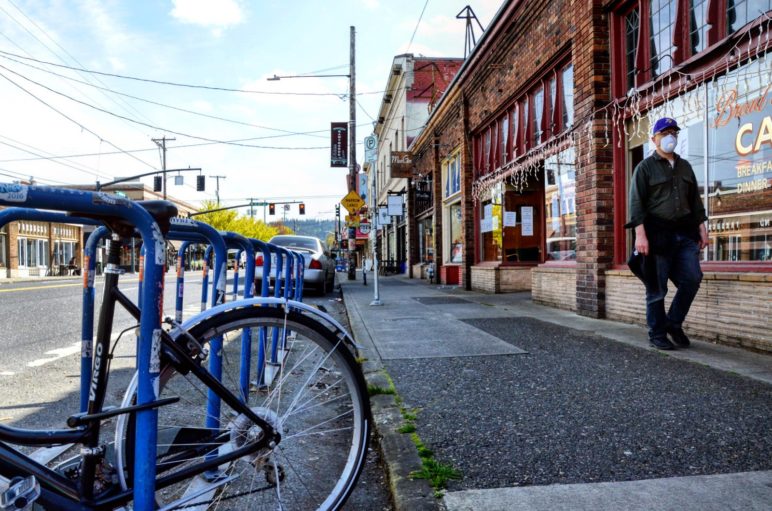
3. Millions of renters are now hanging by an even tinier thread.
Massive hemorrhaging of jobs is revealing, again, the vulnerability of renters. By one estimate, 40 percent of New York City’s renters won’t make rent this month, and initial reports show that so far nearly a third of tenants in the US haven’t paid rent as of April 5. In Oregon, Washington and British Columbia, as elsewhere, Google searches for “can’t pay rent” are on the way to all-time highs.
In March, most US states and Canadian provinces enacted eviction bans, as did dozens of cities and the US government for properties funded by federally backed loans. Such bold action to protect tenants was unheard-of before now. But eviction bans, and likewise rent and mortgage forbearance, are only Band-Aids, because the rent piles up and eventually comes due.
What out-of-work renters really need is cash from the government to cover rent and preserve their housing security until things get better. And if one accepts that, it’s not a big leap to also accept that governments should provide renters that safety net even in normal times, because all manner of personal catastrophe can strike at any time.
4. You can’t shelter in place if you don’t have shelter.
Timothy Harris, director of the Seattle non-profit Real Change, writes that “in the last three weeks, King County has done more to expand and humanize our shelter system than we’ve seen over the past four years of the homeless state of emergency.” The county is adding beds for nearly 1,900 people “who are unable to isolate and recover in their own homes, or do not have a home,” and is moving 400 homeless people from shelters to hotels. Seattle is creating capacity for 100 homeless individuals in existing tiny house villages and an empty treatment facility. Officials are making room for up to 140 homeless people at the Oregon convention center in Portland. California has readied 7,000 (suddenly vacant) hotel rooms for those homeless during the crisis.
All this quick action raises the question: if governments can find a way to take care of lots more homeless people now, why can’t that be the norm? Time will tell if this near-term trend of aggressively finding ways to expand care will endure post-crisis. If nothing else, elected officials may find it difficult to take away some of the new shelters now that they’re established.
5. A downturn has upsides for creating subsidized housing.
As the economy grinds to a halt, it’s all but certain that in most North American cities homebuilding will slow dramatically too. A chilled market can open opportunities on multiple fronts for new subsidized homes. When private developers aren’t scouting for land to build on, it makes it that much easier for affordable housing developers to obtain it. Likewise, legally entitled but unbuilt projects abandoned by private investors, as well as existing apartment buildings and even hotels in some cases, can be picked up at bargain basement prices and converted to rent-restricted housing.
Cities can play a proactive role in any of these transactions. Local funding, such as Seattle’s housing levy, can be relatively recession-proof. On the other hand, low-income tax credits—the single largest subsidy for affordable housing in the US—will likely take a hit. For municipalities with ambitious visions for building social housing, borrowed money (through issuing bonds) has never been cheaper.
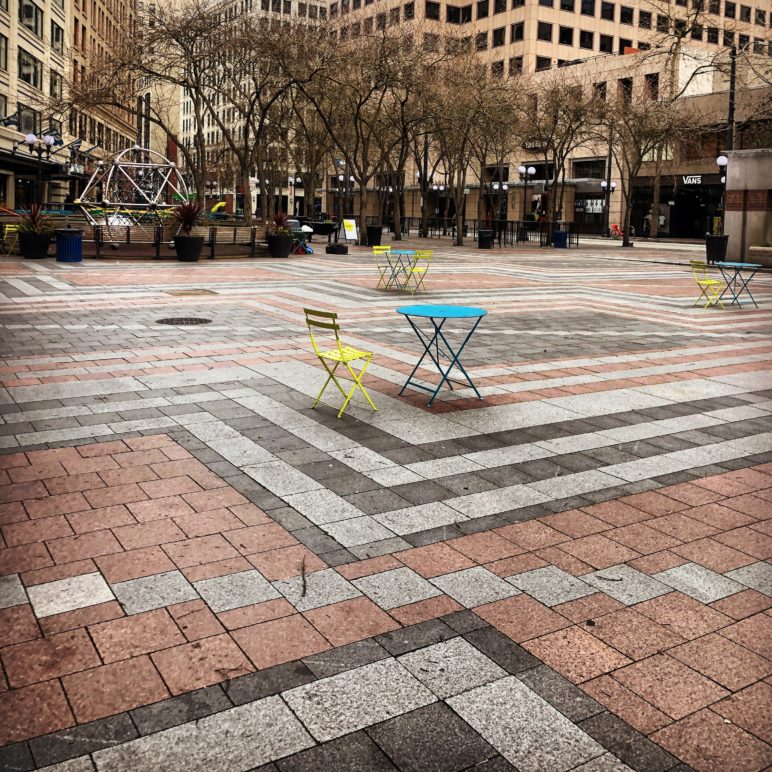
6. Flexible housing is a crisis shock absorber.
Housing abundance is also resilience. Laid-off restaurant workers have to downsize. Some sheltering seniors need to live where they can get daily help. Closed campuses are sending college students home. The coronavirus makes crystal clear the benefits of housing flexibility, the value of being able to get more from less.
Common-sense options like in-law apartments, tiny houses, mobile homes, and even driveway RVs can let people share their excess space or quarantine family members—but only in places where local laws allow them. In most residential lots in North America, none of those options are legal—zoning laws prohibit an owner from so much as converting a house into a duplex. The help all sorts of people need with housing during this crisis lays bare the moral bankruptcy of prioritizing “neighborhood character” over homes for our neighbors.
7. We’ve got to spend less money building each new home.
Even before the coronavirus hit, the gap between average incomes and the cost of building new homes in North America was wide and getting wider. That equation can make ending a housing shortage insurmountable. Now, with millions losing income, the need to rein in homebuilding costs is all the more acute.
We already know how. On the public side, cities can lift bans on cottages, duplexes, quads, apartments and car-free homes, and minimize permitting delays and fees. Small-scale multiple-dwelling homes like rowhouses and stacked flats framed in wood are as cheap as new housing comes, but are banned on most land in most cities.
On the private side, the potential cost savings of modular construction has been hyped for decades but in recent years is finally getting real. To help bring housing abundance post-crisis, local governments can reform rules and create incentives to unleash the speed and cost-efficiency of modular building. Demonstrating the benefit of flexibility, Washington state-based modular manufacturer Blokable rapidly trucked one of its stand-alone homes from Seattle to a COVID-19 quarantine site in Centralia, WA.
8. Airbnb units can switch back—and that’s a good thing.
As with the rest of the hospitality industry, Airbnb’s business has vanished overnight. Some speculate that Airbnb hosts unable to pay their mortgages could help fuel a housing market crash. Conventional rental listings have spiked in cities including London, Dublin, and Madrid, likely due in part to desperate Airbnb hosts looking to stop their bleeding by seeking long-term tenants.
A growing pool of rental homes is good news for renters, and Airbnb critics may see this as vindication. However, it also demonstrates an upside of Airbnbs compared with hotels: right now, while most hotels sit empty and useless, Airbnb units are morphing into long-term rentals and giving more people stable homes when they need them.
Also, what’s often overlooked is that new hotels displace potential apartments, thereby shrinking the rental stock. So the antidote for tourists outbidding local residents for housing isn’t to ban Airbnb, it’s to heavily tax both Airbnbs and hotels.
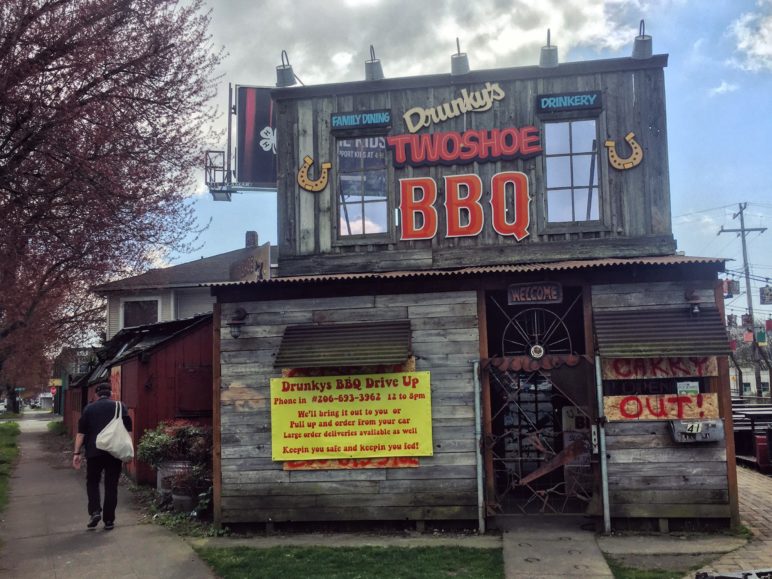
9. How deep into the matrix will we go?
The coronavirus is spinach for Amazon and kryptonite for brick-and-mortar retail. It’s mostly bad news for urbanism—cities need life on the streets, and local shops are a big part of that. One catch, though: outside of compact walkable urban cores, home delivery is likely more carbon-efficient than individuals driving all over the place to stores.
And what of all the other ways life has moved online during the shutdown? In addition to telecommuting, that includes schooling, telemedicine, food delivery, conferences and trades shows, and even theater and music performances. Which, if any, will prove durable after the crisis? The reductions in travel—and the climate pollution it creates—could be major. Remember, only a fifth of urban car trips are for commutes. Such shifts would also change how we allocate valuable urban space. Does less space for retail mean more space for housing, or for third places?
10. “Hey cars, can we please have some land back?”
As ex-TV news anchor Dan Rather put it on Twitter, “maybe when this is all over we can widen the sidewalks.” The hordes escaping home confinement by taking socially-distanced walks in neighborhoods depleted of moving cars can’t help noticing the absurd space priority we give to mobile metal capsules rather than the people not inside them. Some cities are closing streets to cars temporarily, but momentum to take back streets for people could outlast the crisis. Can we at least do away with beg buttons for good?
11. Walking is the best, but what’s there to walk to?
Evolution designed humans to walk, but the 20th Century designed much of urbanized North America to make walking miserable. Our shutdowns have led to lots more people venturing out for walks around their neighborhoods. Many who live in car-dependent places are no doubt discovering that there’s nothing interesting for them to walk to, and that the landscape is absurdly hostile to pedestrians. On the other hand, many walkers are likely discovering cool things nearby such as pocket parks they never knew about, and also learning that places aren’t as hard to get to on foot as they thought. It all can’t hurt for future public policy efforts on walkability.
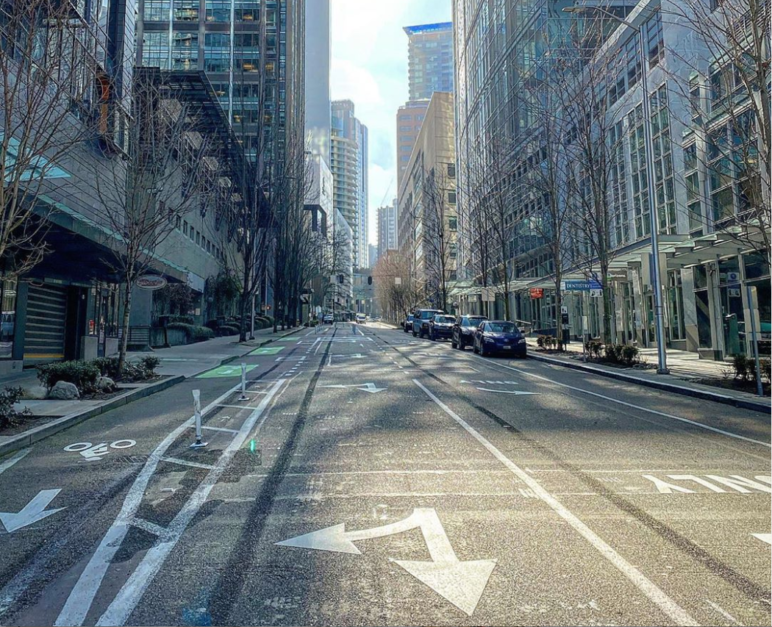
12. Bikes were made for cities and cities were made for bikes.
As with walking, people sheltering in place are rediscovering bicycles. I’ve witnessed an upsurge in my Seattle neighborhood: family groups with excited kiddos pedaling their own two-wheelers; older couples taking slow cruises on matching comfort bikes. My favorite part: many cities have deemed bicycle shops essential, so they can stay open. It’s cheap, fun exercise that gets you outside and takes you faster and farther than walking can. And, perhaps most importantly, it sure feels safer these days without so many speeding 2-ton metal boxes bearing down on you. A few cities have already added new bike lanes. Post-crisis we may end up with not only more bikers but also more advocates for protected bike lanes.
13. Getting kicked while they’re down: transit and shared micromobility.
Pre-COVID-19, transit ridership was generally on the wane across the US, Seattle the only major city bucking the trend (though ridership was rising modestly in Canada). But now it has cratered everywhere. Not only has commuting dried up, but transit also raises fears of virus transmission—officials attributed a surge in New York City’s bikeshare to people avoiding the subways. The CARES Act includes relief dollars to keep transit running, including $555 million for the Puget Sound region.
Bike- and scooter-share systems have had their ups and, mostly recently, their downs, but now face a new threat: in the age of the coronavirus who wants to hop on a scooter some stranger just handled? (For personally owned scooters or other rigs like one-wheels, shutdowns are likely inspiring more people to give it a go.)
14. A big chance to boost climate action or another excuse to punt?
The widely acknowledged need for massive economic stimulus creates a big opportunity to fund actions that align with the US Green New Deal. Trillions of federal dollars pouring into building energy retrofits, high speed rail, and vehicle electrification, along with job training and economic development for frontline communities, would be transformational for US cities.
There’s also all kinds of potential for the intersection of job creation and climate protection. For example, former Washington state representative Jessyn Farrell writes that “it’s time to create our mini-WPA by accelerating the Ballard-West Seattle light rail.” But things could also go the opposite way. The monumental task of reviving a gutted economy may for years suck the air out of political momentum to tackle climate change. Leaving aside that it’s an abject lie, Trump’s claim that relaxing fuel economy standards would cut the price of a new car by $3,500 may resonate with those clawing their way out of a financial hole.
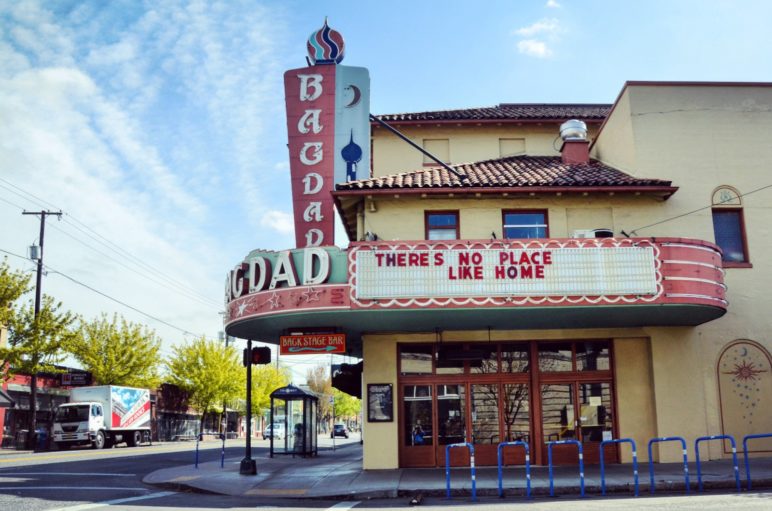
15. Cities will be okay.
Anti-urbanists wasted no time in blaming the pandemic on density, righteously predicting that it “will push workers back into their cars and out to the hinterlands,” as noted sprawl apologist Joel Kotkin put it. With a take that one might think came out of The Onion, the Cato Institute’s Randal O’Toole writes that the government should “help people who don’t have automobiles buy fuel‐efficient cars so they can drive in vehicles that are safe from novel viruses.” Unfortunate phrasing by Governor Cuomo and unfortunate framing in a New York Times article added to the noise.
As I see it, the reports of the death of cities are greatly exaggerated (h/t Mark Twain). Thankfully, others have already written strong rebuttals, so I can save my breath, see here, here, and here. Yes, proximity can speed the spread of viruses. But infectious disease has been a threat in cities since they first appeared 5,000 years ago, and disenchanted city dwellers have always been fleeing to the suburbs and beyond. Cities persist because their capacity to make people’s lives better outweighs their risks, including disease, and that’s not gonna change any time soon.
Big thank you to my Sightline colleagues who inspired and refined many of the ideas in this article, and managed to do so without face-to-face interaction.
